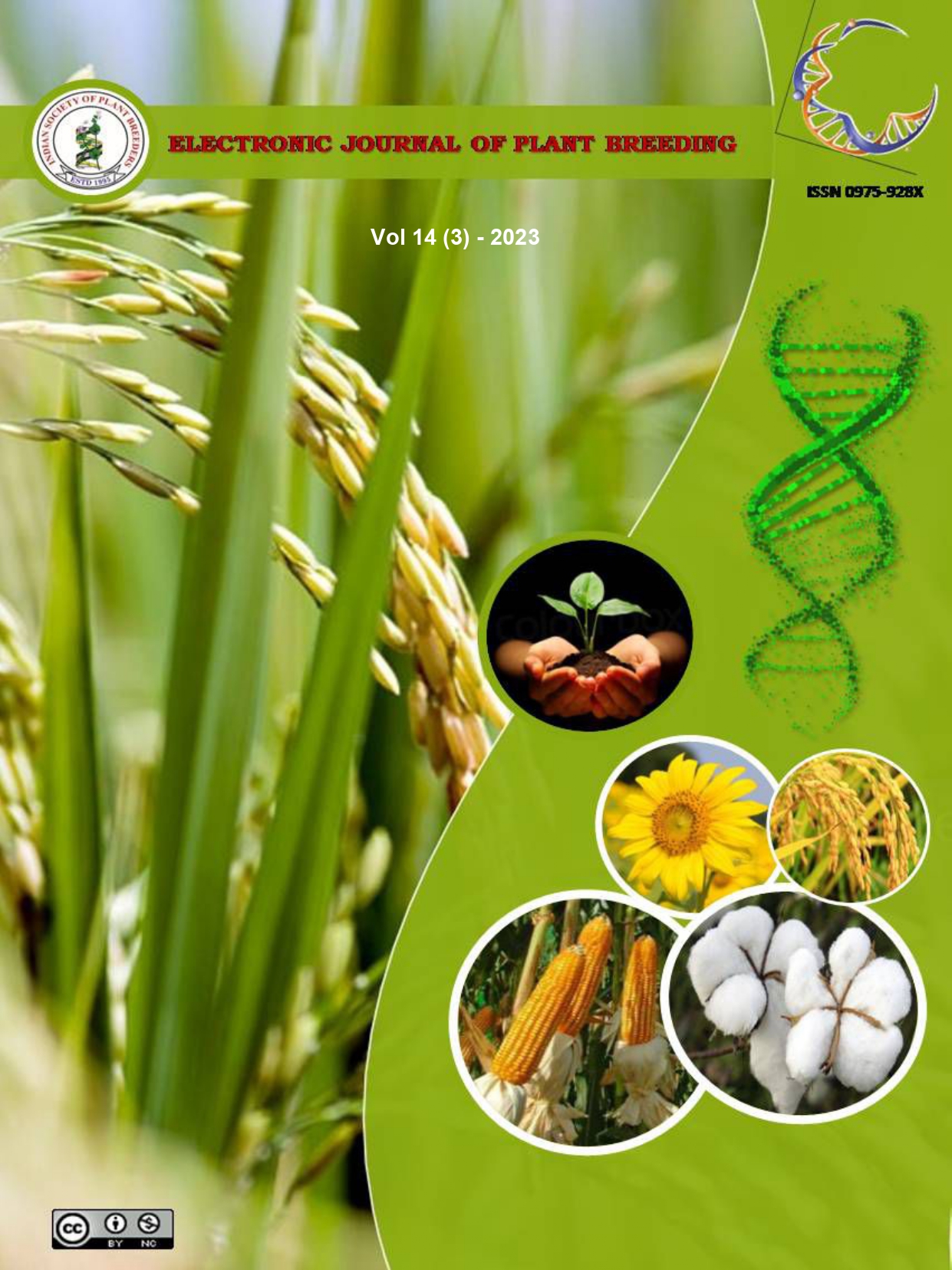Comparative patterns of principal component and cluster analysis under sodicity and normal soil conditions in rice (Oryza sativa L.)
Abstract
Rice is an important food crop that feeds majority of world population. The crop is sensitive to sodicity stress and the area under sodicity is gradually increasing, resulting in decline in productivity. The present investigation aimed to study the genetic diversity patterns of rice germplasm under sodicity and normal soil conditions using principal component and hierarchical cluster analysis. The germplasm was raised at two different environments and the observations were subjected to principal component and hierarchical cluster analysis. The principal component analysis identified four principal components having eigen value greater than one under sodic as well as normal soil environments. The genotypes that exhibited higher values for a particular trait were identified using the biplot as they were located sodicity tolerant rice varieties. closer to the trait vector. The comparison of biplots revealed that trait vectors for DFF, FLB, HGW and SPY were located at different quadrants under sodic and normal soil environments. Hierarchical cluster analysis grouped the rice genotypes into five clusters under both environments. The tolerant (TG63, TG121 and TG17) and susceptible (TG54, TG55, TG86 and TG185) genotypes were identified by comparing the clustering pattern of these genotypes under sodic and normal soil conditions. Identification of clusters with higher genetic distance (cluster I and cluster V) could be employed in plant breeding programmes to produce higher frequency of transgressive segregants and develop Keywords: Rice, Diversity, PCA, Hierarchical cluster analysis

